calsfoundation@cals.org
Rector (Clay County)
| Latitude and Longitude: | 36º15’47″N 090º17’33″W |
| Elevation: | 290 feet |
| Area: | 1.36 square miles (2020 Census) |
| Population: | 1,862 (2020 Census) |
| Incorporation Date: | September 13, 1887 |
Historical Population as per the U.S. Census:
|
1810 |
1820 |
1830 |
1840 |
1850 |
1860 |
1870 |
1880 |
1890 |
1900 |
|
– |
– |
– |
– |
– |
– |
– |
– |
525 |
520 |
|
1910 |
1920 |
1930 |
1940 |
1950 |
1960 |
1970 |
1980 |
1990 |
2000 |
|
1,859 |
1,801 |
1,617 |
1,736 |
1,855 |
1,757 |
1,990 |
2,336 |
2,268 |
2,017 |
|
2010 |
2020 |
|
|
|
|
|
|
|
|
|
1,977 |
1,862 |
|
|
|
|
|
|
|
|
Rector, a railroad town on the St. Louis and Texas railroad line (Cotton Belt), was platted by the Southwestern Improvement Association in 1882 and incorporated in 1887. Rector and the surrounding land has served as an area of timber harvest and agriculture, religion, education, business, and politics. Named for former governor Henry Massie Rector, the town has served many politicians who visit for its annual Labor Day parade and picnic.
Pre-European Exploration through European Exploration and Settlement
Eastern Arkansas has been inhabited for thousands of years. The area long has provided abundant hunting and fishing, as well as fertile soil for native populations. Indian artifacts have been found on farmland around Rector. Spanish explorer Hernando de Soto entered present-day Arkansas in 1541, but it is unlikely his expedition reached Clay County. In the eighteenth century, numerous people, both European and Indian, hunted up and down the St. Francis River valley. Until an 1808 treaty, the area was claimed by the Osage, who lived in Missouri but hunted in Arkansas.
Louisiana Purchase through Early Statehood
Located on the eastern side of the uppermost part of Crowley’s Ridge, the Rector area once was covered by virgin timber, providing settlers with raw building materials and plentiful wildlife including white-tail deer, bear, and turkey. Clearing of the timber was minimal in the early 1800s because wagons were the only available transportation. Until the arrival of the railroad, timber was cleared mainly to meet the settlers’ needs for wooden structures and to make room for crops, pasture, and gardens.
The first white families arrived in east Clay County in the early 1800s. Settlers met their needs with what could be grown or raised on the land and hunted game or fished in area woods and streams. Necessities such as lead, guns, and gun powder were obtained through trading, usually of furs.
When homesteads were relatively close to one another, churches were established. Early churches were miles apart, making attendance difficult. Church and camp meetings served settlers’ need to visit with others and allowed an expression of faith often denied by the isolation of the wilderness.
Education was through private instruction, home schooling, or subscription schools. Most children and some adults attended school for two to three months at a time; classes were not held during planting or harvest. In most instances, schools met in the same buildings as churches. Sometimes a teacher would be responsible for 100 students of all ages.
With businesses such as general stores (at least one also served as the post office) and homesteads scattered over a small area two miles northwest of present-day Rector, the aptly named community of Scatterville grew. Several of Rector’s founding families originally lived in Scatterville but moved to Rector after the railroad arrived in the 1880s.
Civil War through Reconstruction
Arkansas was a slave state, but the majority of area settlers did not own. On March 4, 1861, the first convention vote regarding secession failed. But the decision was reversed on May 6, and on May 10, the Arkansas convention accepted the Confederate constitution, seceding from the Union. This left Clay County practically on the line separating North and South with Missouri abutting the state’s northern border and its eastern border along the St. Francis River.
Civil War battles were fought in Clay County, including at least two skirmishes at Scatterville, and some soldiers may be buried in an unmarked grave in the southeast corner of the Scatterville Cemetery, the last physical reminder of Scatterville.
Post Reconstruction through the Gilded Age
As with many towns of the 1800s, the town came to the railroad rather than the railroad to the town. The railroad had been built as far south as Paragould (Greene County) in 1882 when, in that same year, the Southwest Improvement Company bought eighty acres of land and laid out the town in divided lots. In 1882, the arrival of the first train was celebrated by a twenty-one-gun salute and a speech from a flatcar, punctuated by a blast of the train’s whistle by the engineer; that whistle sent almost all of the horses, mules, steers, and oxen bolting into the woods and thickets.
After incorporation in 1887, Rector grew rapidly after gaining the ability to export and import goods more rapidly by railroad. Residents had access to almost every service needed or desired in a young city. By 1889, Rector had general stores, drugstores, a grocery, two (temperance) saloons, a hardware store, a harness and saddle store, a photograph gallery, a stave factory, two sawmills, two cotton gins with gristmills, a livery stable, two hotels, a meat market, a millinery store, a post office, four church organizations, and two church edifices. It also had lodges for Masons, Odd Fellows, and Knights of Honor; schools; physicians; and the largest population in the county.
Many buildings were wooden structures haphazardly constructed along muddy streets. Fire was a daily threat, and some fires spread quickly in the dry summer months, often destroying entire city blocks. This danger motivated builders and citizens to use brick, some made on site, when erecting new construction in the 1880s. Eventually, Rector would have its own brick and tile company.
Early Twentieth Century through the Modern Era
By 1918, with a population approaching 2,000, Rector was considered one of the area’s best-governed cities. Businesses continued to grow and new businesses were added over time, including a light and power distributing station.
Matthew J. Motsinger, established jeweler, optician, and inspector for the Cotton Belt, founded Motsinger Park. Located on Rose Hill, Motsinger Park hosted baseball games on Sunday afternoons in summer and an annual Fourth of July picnic. It had a swimming pool, bandstand, and a caged area where Motsinger kept monkeys; deer ran loose in the park. Rector Central Park was transformed from a muddy triangular lot for wagons and horses to a park in 1913 by the Rector Women’s Club. Located on Main and Front streets, Rector Central Park was the site of band concerts on Thursday nights and other events. Today, the annual Labor Day celebration is held in Rector Memorial Park, located on U.S. Highway 49.
Since its beginning, Rector has supported not only local and regional interests but also state and national interests. In wartime, Rector participated by selling bonds and holding scrap drives to collect items such as metal, rubber, rags, and grease, as directed by the U.S. government.
Education
Rector was home to the Robertson Training School and Business College, founded in October 1901 by Professor W. H. Robertson; it closed following his death in 1929. Presently, Rector School provides kindergarten through twelfth-grade classes. The school was known from 1985 to 2000 as Clay County Central after consolidation with Greenway’s schools.
Industry
Sportswear, boat seats, wire, and precision machine components have been produced in Rector. Companies currently located in Rector include Rector Sportswear (established 1965), the Wise Company, and the Crockett Oil Company (established 1922). The area also is supported by agriculture, gravel mining, and smaller businesses. Local crop production includes rice, wheat, and cotton. Cattle and horses are raised in the area as well.
Attractions
Rector’s annual Labor Day celebration, which has grown from one day to four since its 1941 beginning, starts the weekend before Labor Day. It includes games, fair rides, a rodeo, a parade, beauty pageants, a talent show, gospel music, and political speeches. The surrounding countryside provides hunting and fishing opportunities. The Rector Community Museum opened in 2019.
Famous Residents
Sergeant Denver “Bull” Randleman, a World War II paratrooper and D-Day veteran, served with Easy Company, 101st Airborne. He was depicted in the 2001 HBO miniseries Band of Brothers. Randleman died in 2003.
Doyle Overton Hickey served as an officer in the U.S. Army during World War I, World War II, and the Korean War, before retiring as a lieutenant general.
Rector native and actor Maurice Copeland appeared on Broadway and in feature films such as Trading Places and Arthur. Copeland was a popular voiceover artist on radio and television; he died in 1985.
Thomas Dale Alford was born in New Hope (Greene County) but attended public schools in Rector. A state representative from 1959 to 1963, Alford served in the U.S. Army Medical Corps and was an assistant professor at Emory University College of Medicine in Atlanta, Georgia. He was a faculty member at the School of Medicine of the University of Arkansas (now the University of Arkansas for Medical Sciences) and served on the Little Rock (Pulaski County) Board of Education from 1955 to 1958. During the desegregation of Little Rock Central High School in 1957, Alford, a segregationist, became only the second write-in candidate to be elected to Congress.
Rector native Bill Carter was a member of the Secret Service in President John F. Kennedy’s administration and helped the Warren Commission investigate Kennedy’s assassination. A member of the U.S. Air Force (1953–1957) and a lawyer “specializing in civil and criminal law,” Carter has worked in politics, television, and film/video. He has worked with or represented notables such as Federal Express founder Fred Smith, gospel music legend Bill Gaither, the Rolling Stones, and country music artists including Reba McEntire, Waylon Jennings, Rodney Crowell, and Carlene Carter. Since 1995, Carter has served as executive producer for Gaither Television Productions.
Richard Simmons, an Arkansas state representative from 1995 to 2001, lived in the Rector area.
The Dooleys, a gospel group consisting of five siblings born and raised in the Rector area, released an album in the fall of 2005.
For additional information:
Barnes, Cathy, ed. Life & Times from the Clay County Courier Newspaper. 17 vols. (1893–1925). Conway, AR: Arkansas Research, Inc.
Biographical & Historical Memoirs of Northeast Arkansas. Greenville, SC: Southern Historical Press, 2002.
Clay County Democrat. https://www.cctimesdemocrat.com/ (accessed August 15, 2023).
Horton, Signa. Clay County Centennial: 100 Years of Progress. Vol. 1: 1873–1973. On file at the Rector Library, Rector, Arkansas.
Life in Rector. http://www.rectorarkansas.com (accessed August 15, 2023).
Webb, Robert T., Bruce Brown, and Patsy Truscott, comp. History and Traditions of Clay County. Piggott, AR: Webb, Truscott, and Brown, 1933.
Tracy L. Johnson
Alma, Arkansas
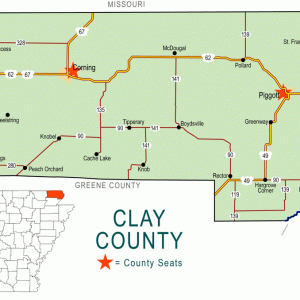 Clay County Map
Clay County Map 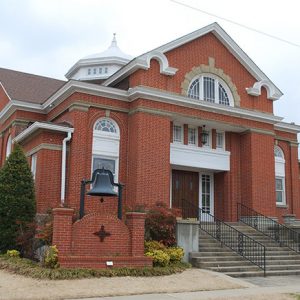 First United Methodist
First United Methodist 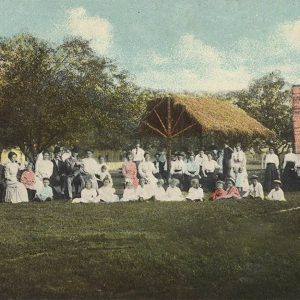 Motsingers Park
Motsingers Park 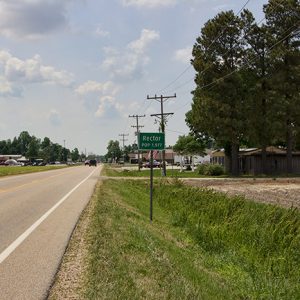 Rector
Rector 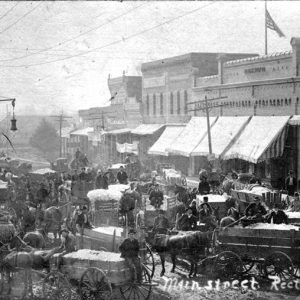 Rector Cotton
Rector Cotton 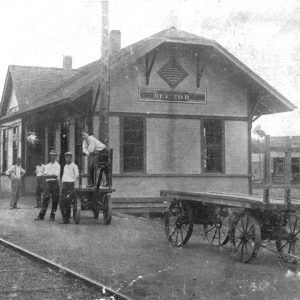 Rector Depot
Rector Depot 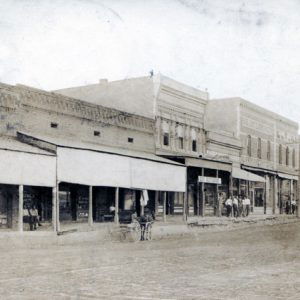 Rector Street Scene
Rector Street Scene 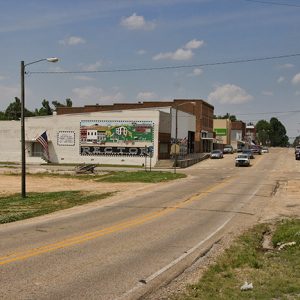 Rector Street Scene
Rector Street Scene 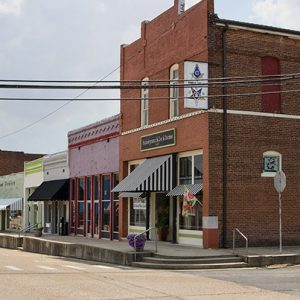 Rector Street Scene
Rector Street Scene 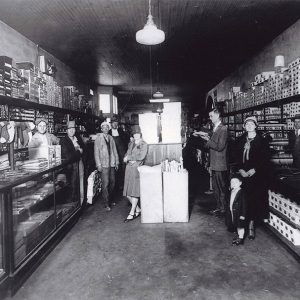 Wolfe Dress Shop
Wolfe Dress Shop 



I was born in Paragould, Arkansas, and raised in Rector. Wonderful town. Moved away when I was younger to Pensacola, Florida. I didn’t really know much of the history of Rector until I just read up on it. I didn’t teach as much about it in school, but this is a wonderful thing to learn. I think they should put that in the textbooks and let the kids know about Rector and how wonderful the city is and how it was discovered. I’m proud to have been raised in Rector. In my younger years I came back and visited now and again. Maybe this summer I’ll make it back and I will be there for Labor Day picnic. I remember my grandma and grandpa loved that town: Genevieve Williamson and Barley Williams. He worked for the city for many years.